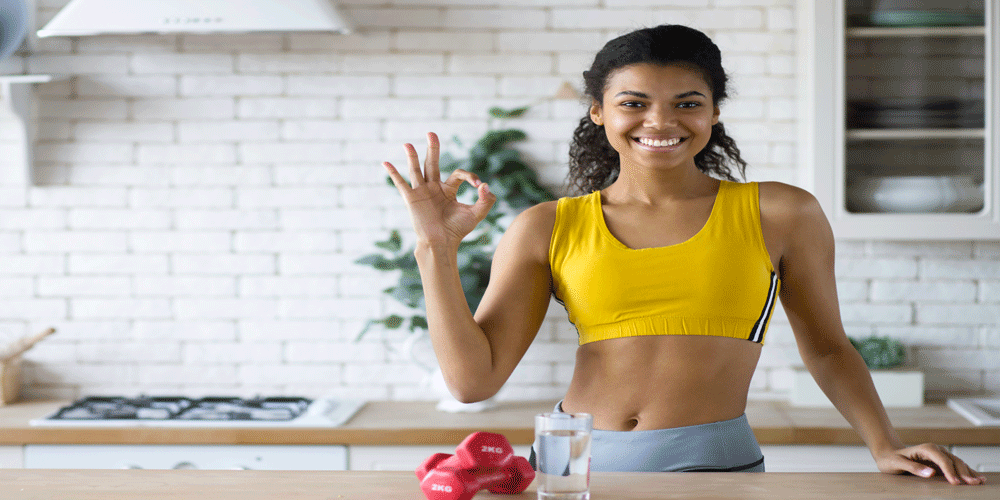New research suggests DIY can boost mental and physical wellbeing and found that for the majority of Brits, watching paint dry isn’t actually boring at all, as 58% say they enjoy watching and checking on it.
Home improvement retailer Wickes teamed up with a leading neuroscientist to understand how DIY can help counter anxiety, stress, and improve wellbeing. The DIY specialist also asked 1,500 participants how they felt after watching a video on wallpapering a room.
>>> Doing DIY helps counter anxiety, stress and improve wellbeing while aiding physical and cognitive abilities, new research suggests
>>> Majority of Brits surveyed found watching paint dry ‘satisfying’ while three quarters who viewed a DIY tutorial agreed it made them feel relaxed with an increased sense of satisfaction
>>> Home retailer Wickes has teamed up with TV neuroscientist to create world’s first meditation movie, ‘DIY Is Good For You’, featuring ‘satisfying DIY sequences’, designed to encourage mindfulness
And around half (45%) said the footage made them feel more relaxed, while one in ten (9%) also admitted that sounds including mixing the paste and cutting the wallpaper helped them unwind.
The majority (86%) also said doing some form of DIY, such as upcycling, putting up a shelf or laying tiles, has been previously beneficial to their wellbeing and eased anxieties.
When asked about the best outlets for helping to improve wellbeing, doing DIY or home improvement topped the poll (51%) above yoga (30%), playing sport (26%) and practising a musical instrument.
Interestingly, the majority (82%) of those surveyed revealed that saving money by opting to carry out a DIY task themselves rather than outsourcing it to a professional or family member improved their sense of wellbeing.
Wickes and TV neuroscientist Dr Jack Lewis used the findings to create the world’s first DIY meditation movie, designed to encourage mindfulness by either watching or doing DIY tasks.
The 20-minute film, ‘DIY Is Good For You’, features scenes including:
>>>The full painting process, from opening the lid on a tin of paint, rolling the paint brush back-and-forth into the paint, and then applying the first roll of paint to a wall. All before removing the frog tape to reveal the final, finished paint job
>>>The process of filling a crack in a wall with filler, to grouting tiles and sealing around a bathtub to leave a smooth and clean finish
>>>A pressure washer clearing a dirty patio to pouring gravel and using a rake to spread it
>>>A satisfying sequence of wallpaper being stripped from a wall using a steamer and the wallpaper falling to the floor
The film can be viewed here: https://www.youtube.com/watch?v=JDljRiLFk30.
Neuroscientist Dr Jack Lewis said: “Various pieces of evidence suggest that both undertaking and watching DIY is a relaxing experience. Meditation in its purest form is about living in the moment, being present and focusing on the task in hand – and DIY allows exactly that.
“The process of undertaking DIY tasks means there is no ‘brain space’ left for worrying about past or future events. And its repetitive nature can also be very meditative.
“The 20-minute video aims to encourage a sense of calm for the viewer. Studies suggest that mindfulness or meditation for that length of time daily can result in better mind management after 12 weeks.
“Undertaking DIY tasks has benefits for overall wellbeing. The motor cortex in the outer surface of the human brain has specific areas dedicated to producing movements in different parts of our body. And the brain area dedicated to the hands and fingers are disproportionately large when compared to other body parts.
“That’s because performing skilled hand movements is a very important part of being human, and the enlarged brain areas needed to trigger them – supporting evidence that doing manual tasks, like DIY, makes us happy.”
The research also found that around three quarters of Brits (72%) feel carrying out a DIY task gives them a sense of accomplishment, while over half (52%) say it helps them step away from their phone or laptop (52%) – and it gives a sense of relief that a task has been ticked off the list (42%).
Almost half (47%) said they would recommend DIY as a remedy for someone suffering with anxiety.
Wickes Most Satisfying DIY Tasks To Undertake:
1. Removing wallpaper (named by 41% as providing a feeling of satisfaction)
2. The first roll of paint on a wall (37%)
3. Pressure washing (35%)
4. Removing frog tape from a wall (33%)
5. Putting up a shelf (29%)
6. Sanding / sealing a bath / removing the lid from a tin of paint (16%)
7. Mixing paint / installing flooring (14%)
8. Fixing decking (10%)
9. Drilling (8%)
Dr Jack Lewis added: “Doing DIY and seeing improvements over time provides a heightened sense of self-efficacy and also creates feelings of accomplishment. However, it’s important that whenever any tasks are undertaken enough time is allowed to complete them without feeling rushed, as this can result in feelings of stress.
“Whether watching or doing DIY, make sure it’s in a place where you’re able to focus on the task at hand and not be distracted by external pressures.”
Gary Kibble, Chief Marketing and Digital Officer, Wickes, said: “We’re excited to learn that so many people are enjoying DIY and finding it a useful resource in helping them switch off from the stresses of everyday life.
“Historically DIY may have just been seen as a necessity for jobs in the home, but nowadays more people are doing it as an enjoyable pastime to help them relax. We hope that the meditation film will allow more people to enjoy DIY and reap the benefits.”
The ‘DIY Is Good For You’ film is released to coincide with Wickes’ 50th anniversary. It is available to view on both the Wickes website and YouTube page.
Source: Wickes & Insight News Team
